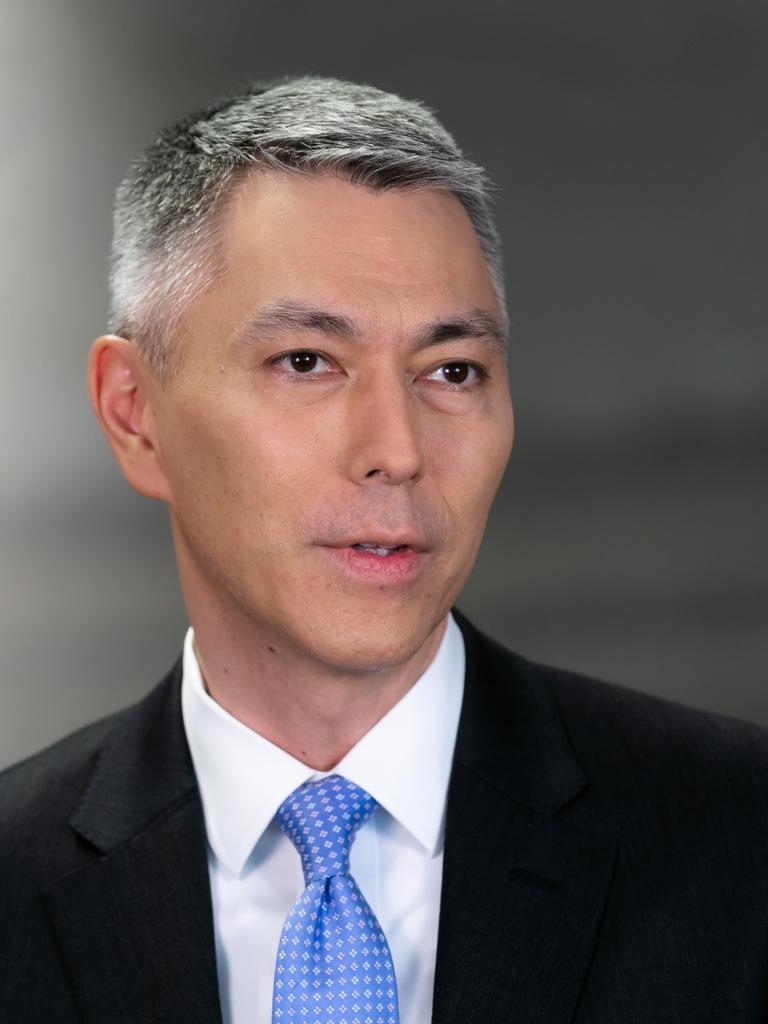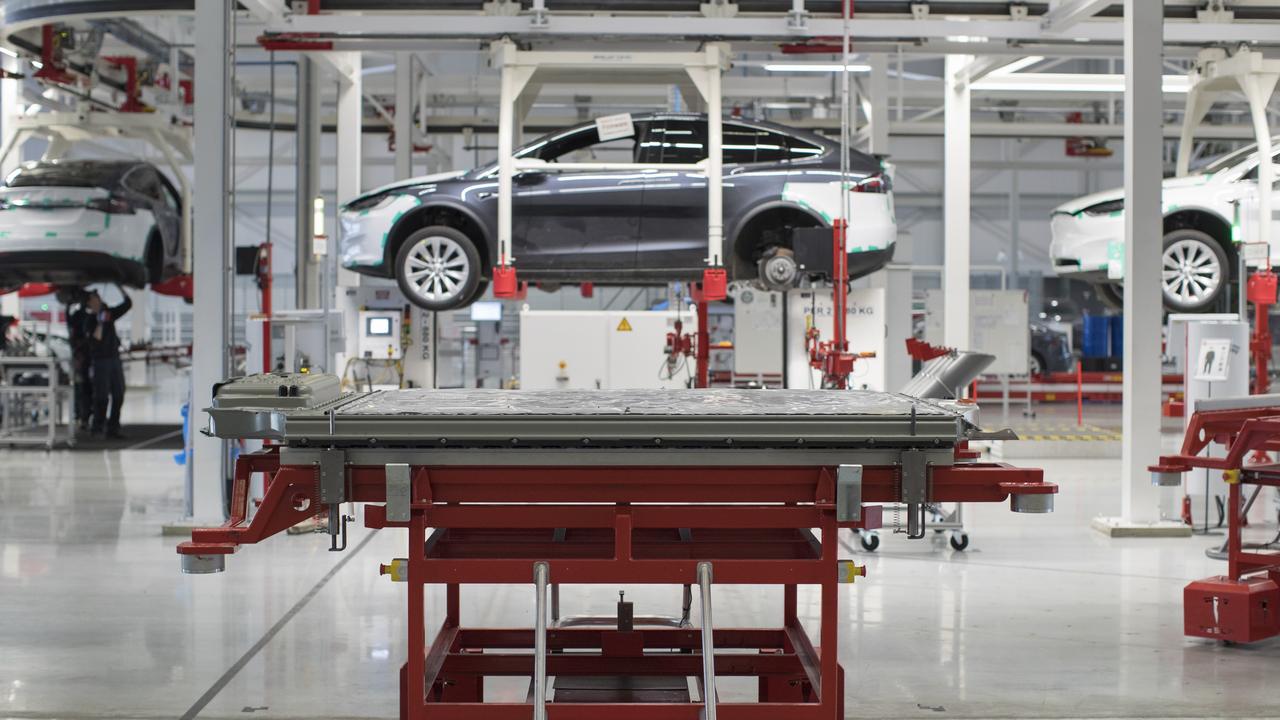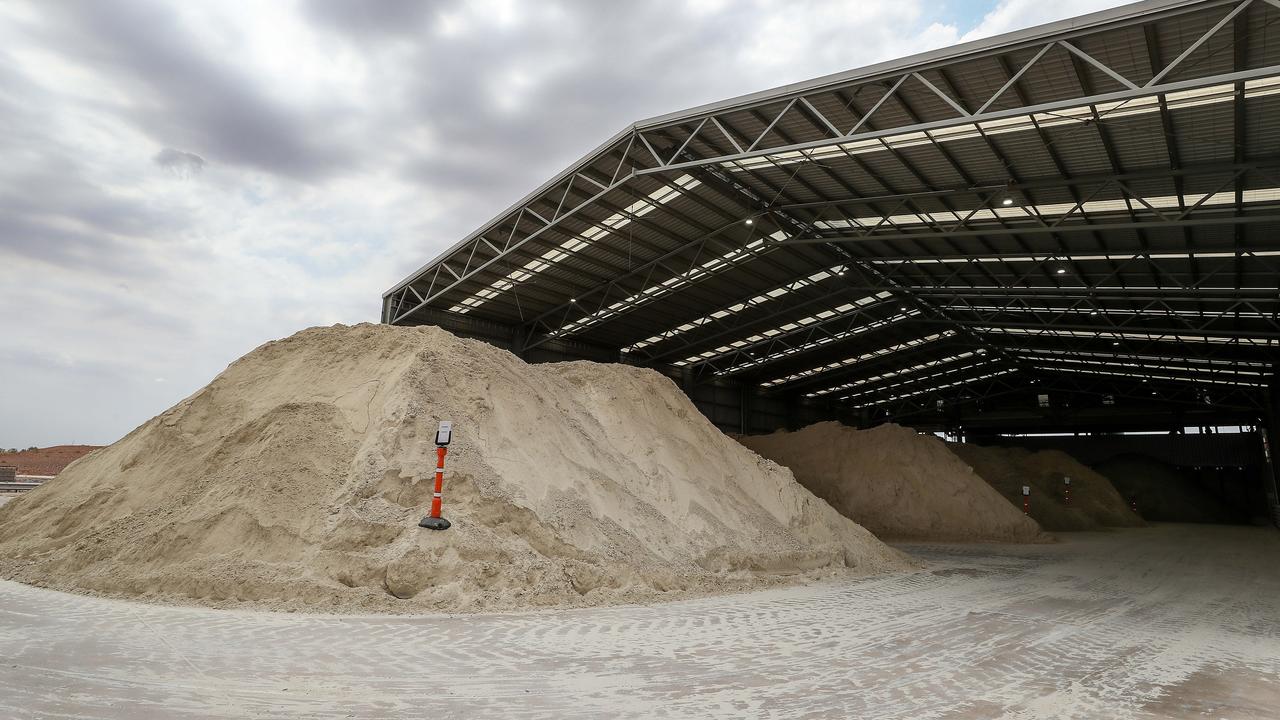Missing the action: Behind BHP’s call to sit out of lithium
By the end of the decade shareholders will be either cursing the miner for missing the potential, or thanking it for holding its nerve.
Business
Don't miss out on the headlines from Business. Followed categories will be added to My News.
The world’s biggest miner has spent the best part of the past decade arranging itself around commodities that it believes will remain in hot demand well into the future.
BHP is leaning into the megatrends it believes are set to shape the world for decades to come. This is copper for renewable energy, nickel for electric vehicles. Then iron ore and coking coal for steel production as well as potash, a fertiliser critical for sustainable farming.
For commodities that will be in demand in the future, there is one big gap in BHP’s portfolio: lithium. The miner is determinedly sitting out where everyone else – including its big rival Rio Tinto and oil giant ExxonMobil – are rushing in.

So hot is demand with production expected to be in short supply, car makers around the world have been spending up big to lock in exclusive supply contracts, and this is underpinning mining start-ups. With a surge in take up for EVs, brokerage UBS has forecast demand for lithium to double by 2025 and increase four times by 2030.
For some it’s a surprising choice. BHP certainly has the capability and marketing power to make a difference in global lithium markets, the soft silvery material underpinning long-life batteries used in everything from laptops, EVs and power grids. And the investment in lithium would be relatively modest compared to new mines it is developing such as potash or copper through last year’s $9bn buyout of Oz Minerals.
By the end of the decade shareholders will be either cursing BHP for missing the potential, or thanking management for sitting out where others have lost billions.

Despite the recent sharp pullback in lithium prices from record highs hit at the start of the year, Australia’s biggest pure play producer, the $14bn Pilbara Minerals, says the long-term outlook is strong for battery grade lithium raw materials. Pilbara’s Dale Henderson told investors over the longer term massive global investment in greening power grids and vehicle fleets means lithium will be in short supply. This will come about even in the face of short-term pricing swings. Others like Wesfarmers are venturing outside traditional markets. The conglomerate is spending hundreds of millions as it seeks to move up the value chain by processing lithium in Australia. If Wesfarmers’ bet for long-term demand for batteries plays out this will come with even richer margins.
Calculated move
BHP has looked at lithium from every angle and has landed on a calculated decision to sit out.
“We are a very deliberate company. We want to make specific choices about what we choose to focus on and what not,” chief executive Mike Henry tells The Australian.
“We believe that if we try to focus our efforts on too many things, we will become ineffective. We’ve made the call that we think that the long run fundamentals for copper, nickel and potash are better than they are for lithium.”
BHP’s thesis revolves around the fact that it believes lithium is plentiful across the world so the barriers to entry are relatively lower to iron ore or copper, which often needs massive infrastructure to deliver to market. BHP has refined its portfolio to focus on top-tier deposits that are large-scale and ultra-long life. Lithium tends to be spread across smaller, shorter-term deposits.
Then there are limited technological advances on the horizon for hard-rock lithium that could shift costs lower. Pilbara Minerals this year expects to spend as much as $670 a tonne to mine its rock lithium although it still remains in start-up phase. Some players are reporting cash costs of up to $1000 a tonne. Exxon Mobil earlier this year made some small investments in US brine-based lithium fields with the oil giant seen to be able to bring drilling and extraction technology to the equation.

BHP’s Henry says commodities like copper or nickel have demand resilience because they’re not dependent upon a single market. Although Potash broadly depends on agriculture, there are multiple markets inside agriculture and the commodity is not easily substituted.
Most importantly, BHP believes there’s potential for substitution or disintermediation of lithium particularly as new battery technologies are constantly evolving and being developed.
Even when pushed Henry says he remains comfortable with the decision.
“Some people might look back and say well, maybe if you hadn’t done X, Y or Z you could have captured the margin. I totally accept that proposition. But we are prioritising investment in other commodities,” he says.
Rio Tinto has a foothold in lithium through the Rincon project in Argentina where it is pushing ahead with a starter plant. Its big lithium bet, the $2bn Jadar project in Serbia, has been put on hold for now as it faces intense opposition for the mine. Rio is also dabbling with lithium exploration in Quebec as well as Australia.
Rates return
Outgoing Reserve Bank boss Philip Lowe heads back to Australia this week after having a seat next to the world’s most influential central bankers at the Jackson Hole summit in Wyoming.
The annual get-together of bankers, sponsored by the Kansas City Federal Reserve, marks Lowe’s last international function in capacity as RBA boss. He prepares for the last official board meeting for the start of September, with futures markets pricing the cash rate to remain on hold at 4.1 per cent for now. The global view is just as important in shaping the thinking around how rates are set in Australia and markets are pricing in one more hike in Australia later this year.

That may fall to incoming RBA governor Michele Bullock, who didn’t attend Jackson Hole. Instead she is scheduled to deliver a speech in Canberra on Tuesday that will be closely watched for clues about her thinking on the economy as she prepares to take over the bank on September 18.
Central banks around the world are nearing the end of their rate hike cycle, but from Europe to the US have warned they will be prepared to act if inflation breaks out.
The slowing of the Chinese economy – with the property market there in deep trouble, has eased pressure on commodity-linked inflation but it presents new risks. Treasurer Jim Chalmers on Sunday repeated his belief Australia would avoid a recession, even with a slowing China. Of the broad cross section of CEOs The Australian spoke to during earnings season over the past four weeks, most were upbeat about the medium-term outlook and none were expecting a recession. Although the consensus was the economy had noticeably slowed during the June quarter.

BHP chief executive Mike Henry says it was now a matter of watching how China’s property market responds to some of the stimulus measures put in place. He also points to “many parts” of the Chinese economy that remain robust.
Separate speeches at Jackson Hole from US Fed boss Jackson Powell and European Central Bank boss Christine Legarde both reinforced the expectation rates will stay on hold, although the bias remains to hike again if inflation doesn’t recede. Powell told the conference US inflation was too high although further hikes would be data dependent. Others at the conference alongside Lowe included Bank of Canada’s Tiff Macklem and Bank of Japan’s Kazuo Ueda.
Inflation in Australia is easing, although not as fast as some would hope with services inflation holding sticky. Monthly inflation data is scheduled for release on Wednesday with annual electricity hikes likely to represent a major risk to headline numbers.
Woolworths chief Brad Banducci says inflation across his business is showing “promising signs of moderation” although wage increases through the supermarket combined with higher energy and transport costs mark a new wave.
johnstone@theaustralian.com.au
More Coverage
Originally published as Missing the action: Behind BHP’s call to sit out of lithium









